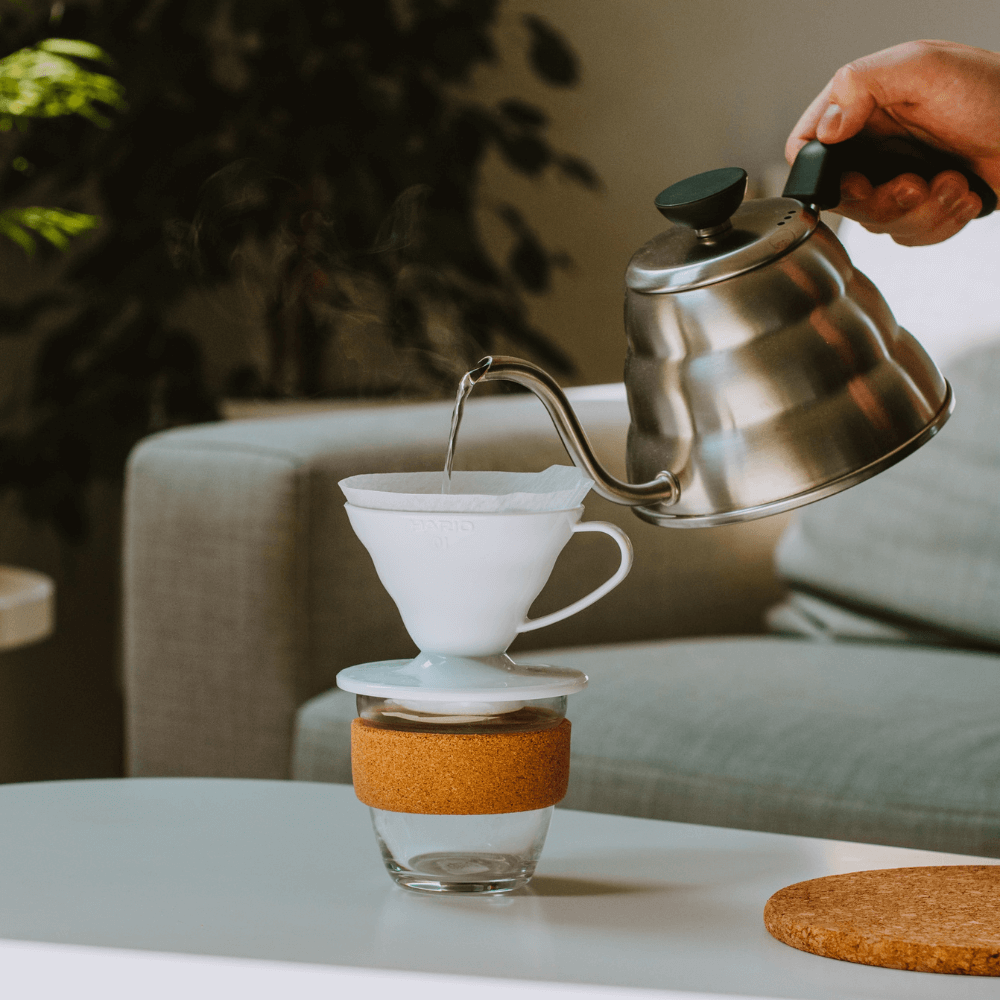Welcome to the world of brew mastery where the gooseneck kettle reigns supreme. This unique kettle, with its long, slender spout, offers precision and control, two critical factors in the brewing process.
In this micro-guide, we'll share effective techniques for using your gooseneck kettle and taking your brew game to the next level.
Jump To:
- Understanding the Gooseneck Kettle
- Perfecting the Basics
- Advanced Techniques with Gooseneck Kettle
- How to Clean Your Gooseneck Kettle
- Maintaining Your Gooseneck Kettle for Longevity
- User Tips and Common Mistakes
- Frequently Asked Questions
- Further Reading
Understanding the Gooseneck Kettle
The gooseneck kettle, a staple in coffee shops and tea houses, is renowned for its unique shape and precision pouring.
Its elongated and curved spout, reminiscent of a goose's neck, is designed for control over the speed and placement of hot water, making it an essential tool for any brew enthusiast.
For more insights into the advantages of a gooseneck kettle in this process, take a look at the article by Rogue Wave Coffee Roasters, "6 Reasons You Need a Gooseneck Kettle for Pour Over Coffee."
Perfecting the Basics
Using a gooseneck kettle correctly can make a world of difference to your brewing.
First, understand the importance of water quality. Water purity can influence the taste of your coffee or tea, so using filtered or spring water can enhance your brew's flavors.
Next, consider the water temperature. Different brews require different temperatures. For instance, green tea brews best at lower temperatures, around 160-180°F, while coffee usually requires hotter water, approximately 195-205°F.
Finally, let's talk about the pour. A slow, steady pour ensures the water evenly saturates the coffee grounds or tea leaves. The gooseneck kettle allows for this control, helping avoid over-extraction or under-extraction.
Advanced Techniques with Gooseneck Kettle
While the basic usage of a gooseneck kettle is quite straightforward, you can employ some advanced techniques to get even more out of your brewing experience.
Coffee Blooming
When brewing coffee, especially using the pour-over method, 'blooming' the coffee is a technique that can enhance the flavor.
This involves pouring a small amount of water onto the grounds to wet them and then waiting for around 30 seconds before continuing the pour. This process allows the coffee to release carbon dioxide, which can negatively affect the taste of the brew.
Tea Steeping
For tea enthusiasts, understanding the concept of 'steeping' is key. Different types of tea require different steeping times for optimal flavor extraction. For instance, delicate green and white teas require shorter steeping times, while more robust black and oolong teas can be steeped for longer.
Using a gooseneck kettle allows for precision when it comes to pouring water and, subsequently, controlling the steeping process.
Pulse Pouring
Another advanced technique you can try is pulse pouring.
This method involves pouring a small amount of water at a time over your coffee or tea, allowing it to almost drain before pouring more. This pulsing action can lead to better extraction and a more flavorful cup.
How to Clean Your Gooseneck Kettle
Keeping your gooseneck kettle clean is just as important as knowing how to use it.
Here's a simple cleaning routine you can follow:
- Empty the kettle after each use. Avoid leaving water inside for long periods.
- Rinse the interior with warm water.
- For deeper cleaning, create a solution of one part vinegar and one part water. Fill the kettle with this mixture and let it sit for an hour.
- After an hour, boil the vinegar solution in the kettle.
- Empty the boiled solution and rinse the kettle several times with warm water.
- Use a damp cloth to wipe the exterior.
Maintaining Your Gooseneck Kettle for Longevity
- Regular Cleaning: This is essential, especially if you live in an area with hard water, as mineral deposits can build up over time.
- Proper Storage: Store your kettle in a dry place to prevent rusting.
- Handle With Care: Avoid dropping or banging your kettle, as this can damage the kettle's body or spout.
User Tips and Common Mistakes
- Avoid Overfilling: Filling the kettle too full can lead to a lack of control during the pour. It's best to only fill it with as much water as you need for your brew.
- Practice Pouring Technique: A controlled, slow pour is crucial for optimal extraction. Try practicing with cold water to get the hang of it before you brew.
Frequently Asked Questions
What is the advantage of a gooseneck kettle?
A gooseneck kettle allows for greater control over the speed and distribution of water, making it ideal for brewing methods that require precision, such as pour-over coffee or delicate teas.
How often should I clean my gooseneck kettle?
It's recommended to rinse your kettle after each use and do a thorough cleaning with a vinegar solution every week.
Can I use a gooseneck kettle on any heat source?
Most gooseneck kettles are compatible with gas, electric, and induction stovetops, but it's always best to check the manufacturer's instructions.
Can I heat milk in my gooseneck kettle?
It's not recommended. The residues from milk can be hard to clean and may impact the kettle's performance.
Remember, these advanced techniques require practice and patience, but the reward is a more flavorful and enjoyable cup of coffee or tea.
Looking for a kettle to practice your brewing techniques? Check out our top picks in our Best Gooseneck Kettle article!
For more insights into the world of brewing, take a journey through the history and cultural influence of the gooseneck kettle in our related article: Gooseneck Kettles: The Historical Journey & Cultural Influence.
Further Reading
- Gooseneck Kettle Science: Heating & Pouring for Better Brews - Understand the scientific principles behind the design and function of gooseneck kettles.
- Gooseneck Kettles: The Historical Journey & Cultural Influence - Explore the rich history and cultural impact of gooseneck kettles across the globe.



